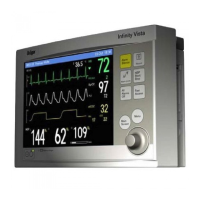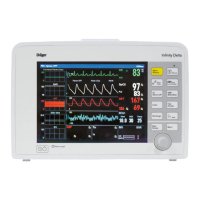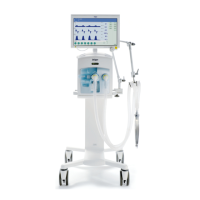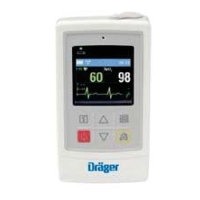8-4 DELTA/DELTA XL/KAPPA VF8
8 ECG
AND HEART RATE
Pacer Detection
When pacer detection is enabled, the monitor identifies as a pacer pulse any pulse that
meets the following specifications:
Amplitude – ±2 to ±700 mV
Width (d
p
) – 0.2 to 2.0 ms
Rise/Fall times (min.) – 0.1 d
p
, 100 ms
Overshoot (min.) – 0.025 a
p
, 2 mV
Recharge time constant – 4 to 100 ms
WARNING:
Always keep pacemaker patients under close
surveillance and monitor their vital signs carefully.
Do not assess the patient’s condition exclusively from
the heart and respiration rate values the monitor
displays and the rate alarms that are generated. Heart
rate meters may continue to count the pacemaker rate
during cardiac arrest or some arrhythmias.
Some pacemakers (especially external pacemakers with
body surface electrodes) emit pulses with amplitudes
far exceeding the 700mV maximum amplitude specified
for the monitor. The monitor may incorrectly detect
these large pacemaker pulses as valid QRS complexes
and may fail to detect cardiac arrest.
Interference from a monitor may cause some rate-
adaptive implantable pacemakers to pace at
unnecessarily high rates. Be extra vigilant with
patients when using these types of pacemakers.
Make sure pacer detection is turned OFF for patients
without pacemakers and turned ON for patients with
pacemakers. Disabling pacemaker detection for paced
patients may result in pacemaker pulses being counted
as regular QRS complexes, which could prevent an
asystole alarm from being detected. Always verify that
the pacer detection status is correct for the patient. Be
aware that setting the ECG filter option to ESU disables
pacemaker detection automatically.
NOTE: Configuring the monitor for neonatal monitoring (see page 2-4) or for
protection from electrosurgery (see page 8-9) automatically disables Pacemaker
Detection.
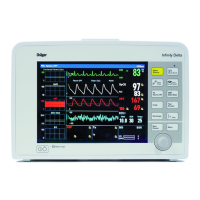
